Trending Post : 12 Powerful Discussion Strategies to Engage Students


Multigenre Research Project: The Key to Fitting in All Genres of Writing
Looking for a way to spice up your writing unit while engaging students, differentiating by ability and interest, and still covering all the required standards at the appropriate level of rigor? Teaching writing is not always easy, but I’ve got you covered. Just keep reading as I introduce you to the benefits of the multigenre research project.
“Writing is easy. All you have to do is cross out the wrong words.” ~ Mark Twain
When I was in grad school for my reading specialist certification, I took a class on teaching writing. It was a little confusing to me at first exactly why I was taking a writing class in a reading program, but as I quickly learned, writing and reading are closely entwined in the love relationship that is literacy. As it was, the professor of this class introduced us to the multigenre research project.
The Multigenre Research Project
What is it, you might be wondering? A multigenre research project is a mixture of imagination, research, reading, writing, and ingenuity. Picture all the goodness of multiple genres of writing smooshed together and combined with student choice and writing workshop.
Students pick a research topic that interests them, and they write about that topic from various angles and viewpoints through multiple genres of writing (creative, expository, persuasive, analytical, argumentative – you name it!).
They package their ideas together symbolically, and they also include a transitional element (a repetend, if you will) that ties each piece of their writing together seamlessly. A lot of thought is required. For a more detailed explanation (and some quality resources), read this .
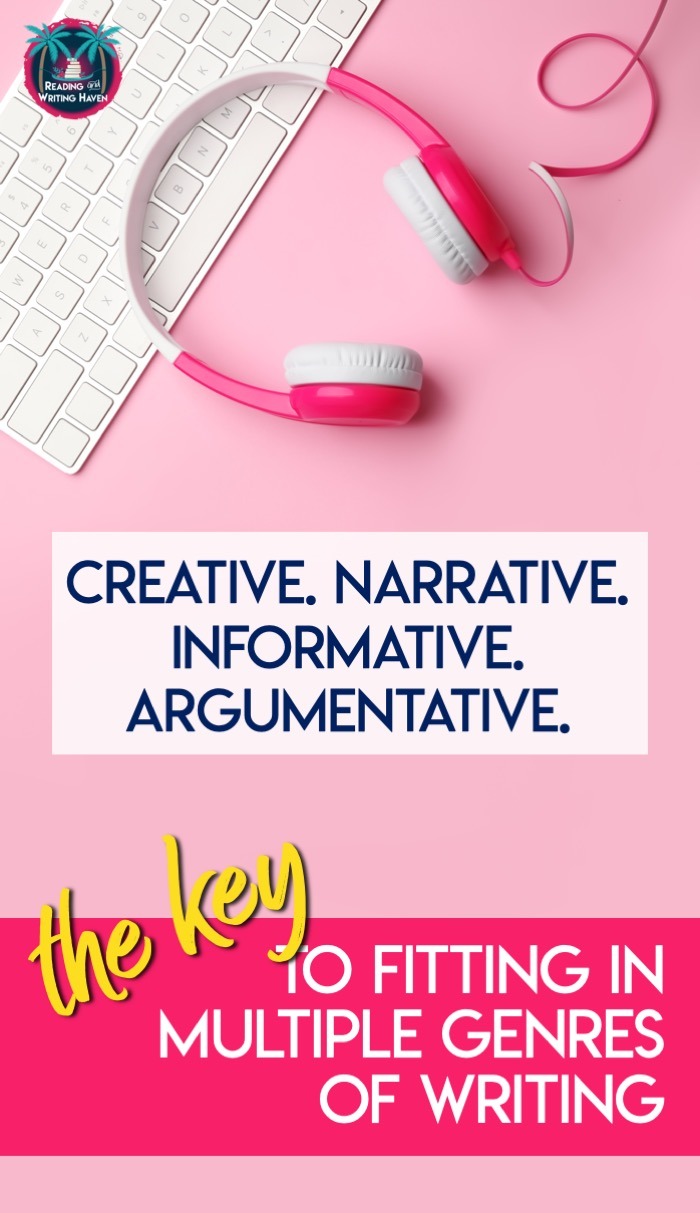
The Time I Wrote One
Back to my story…I’ll never forget what happened next. That professor actually made us write one. The whole thing. I just thought, seriously lady? I have little kids at home…and a dog…and a husband…and two fish…and I teach full time. Are you for real?
The MGP, as she taught it, took me about two months to complete. But, I have to admit: In hindsight, I understood why she was teaching us about this approach to writing and reading. It really was the perfect literacy storm. That’s why I’m sharing these ideas with you today. Also, it doesn’t have to take two months. You can make it fit your needs.
For the sake of brevity, I’m not going to go into all the details about exactly how to structure the unit or what to include (although you can easily do some research on this topic and find a plethora of insanely good ideas). Instead, what I’d suggest is that you get your hands on this book* . It’s the text I used in my master’s class, and the authors tell you everything you need to know.
What I am going to share are 11 reasons why it will revolutionize your research unit.
1. Student interest is paramount.
The beauty of the multigenre research project is that students truly CAN write about almost any topic that interests them. Even if they’ve written about the topic in the past, the multigenre research project will allow them to delve deeper into the subject they enjoy. I was amazed by the level of interest my students showed in their projects. Bonus.
2. Creativity is encouraged.
Sadly, many traditional research papers squelch students’ imaginations. My students are left hungry, always asking me, “When are we doing a creative writing unit?” The demands of high school English curriculum often leave little room for “fun” writing.
With the multigenre project, students are writing multiple pieces about their topic, and each piece is a different genre. If Suzy wants to write a recipe, and Billy Bob is yearning to write a comic strip, so be it.
Students are required to think about how they will tie each of their pieces together (which is called the repetend), and the symbolic project packaging is another angle where students can showcase their imaginations.
3. Minilessons are sprinkled throughout.
One of the reasons I love the multigenre project is because it allows me to see students’ writing on a regular basis (I collect one piece each week), and I focus my minilessons on common patterns I notice in their pieces.
For instance, I cover one trait of writing each week, one or two genres of writing each week, and one grammatical concept per week. Students can grasp the authenticity behind these lessons because they are geared specifically toward their current drafts. We reinforce those ideas as we draft, revise, and edit our genres.

4. Differentiation? A breeze.
You don’t even have to try. It’s impossible to teach the multigenre research project and not differentiate. Students get to pick their topics. You get to help them decide what pieces and how many they should write based on their research and their ability levels. You gear instruction toward their needs. A custom-made assignment for every student. Done.
5. More time is available for conferences with students.
Regular research writing units can feel rushed. With the multigenre project, I make it a habit of sitting down with every student in the classroom at least once a week to conference with them about their current piece of writing and their vision for the project as a whole. I usually do this either during group conference/feedback time or during the day each week I give students to work on that week’s genre. Students appreciate this instant feedback, and at the end of the unit, there are no surprises. We have clearly communicated expectations all along.

6. Potential exists for cross-curricular adventures.
This concept is not just an English thing. Anyone can assign a multigenre research project. Teachers can even join together to have students research topics that cross content areas. When students select topics they enjoy, they will be more likely to want to research different facets of that subject and, in turn, possibly dip into multiple content areas.
7. It enforces the writing process naturally.
It’s always amazing to me that ninth graders can sit in my classroom and not understand the writing process. Hello? There are only five steps! Sigh. In reality, I can’t entirely blame them. If I only purposely thought about the writing process a couple times a year, I probably wouldn’t have much reason to remember it, either.
With the multigenre project, I emphasize that writing process for every piece and for the project as a whole. It’s sort of impossible for students not to have it mastered when we are through.
8. It allows for student-driven learning.
I was a little concerned about how my freshmen students would handle this whole project. In hindsight, they amazed me with their passion for the topics they chose, for the genres they wanted to write, for the depth of their thinking, and for their responsibility they took on with researching. When the choices are left up to the students, they really can impress you.
Even better, my students LEARNED TO TALK ABOUT WRITING. Say what?!? Yes, I sat with them while they conferenced. I modeled constructive feedback. They started out a little meek and unsure, but they ended the nine weeks with some serious writing feedback lingo in their tool belts, and they were more confident in their abilities to assess their own and their peers’ writing. That’s something to celebrate!

9. The design is flexible.
The thing with the multigenre research project is that it truly can be whatever you need it or want it to be. If you only have a couple weeks, students can complete much of it outside of class, or it could be a short project. If you have an entire nine weeks, however, you can really devote some serious instructional time and writing workshop lessons to the unit.
You can include whatever genres of writing you want your students to know, and you can emphasize whatever minilessons they need. Flexibility reigns.
10. Research writing is still taught, but better.
So here’s the thing. I don’t want anyone navigating away from this blog post thinking that students don’t learn how to write a research paper with this approach to writing. Quite the contrary, actually. My students had a firm understanding of what it means to write research pieces after completing this unit, but their comprehension of “research writing” was extended beyond the norm.
I introduced my students not only to traditional MLA research writing skills, but also to the concept of citing research in creative writing through footnotes and endnotes. I showed them different formats of citing sources, and we discussed which citation formats would be appropriate for which genres of writing. The discussion was rich. Learning was forefront. It really was worthwhile.
11. Conquer the writing standards.
I challenge you to find one Common Core writing standard that is not covered with this multigenre research project. It’s a beast. Text types and purposes? Check. Production and distribution of writing? Check. Research to build and present knowledge? Check. Range of writing? Checkmate. I absolutely adore that students can be investing themselves in a topic they love and accomplishing so much learning at the same time. It’s a rich, infectious atmosphere.
If I sat here longer, I’m sure I could come up with far more than 11 benefits of this assignment. For full transparency, I don’t want to end this post with everyone thinking my classroom during this unit was all rainbows and unicorns. Do all students LOVE this assignment? Let’s be real – I wish. With any project, there will always be that pocket who holds back and grumbles, but I actually had many students tell me how much they were enjoying it, so I know it was successful for the majority of the class.

Tips for Implementation
If you are interested in trying this unit in your own classroom, I would first suggest developing an easy template/rubric for grading the assignments.
Also, tell students up front exactly what your expectations are, and as you conference with them, make sure to give them honest feedback so there are no surprises when they get their graded project returned to them. This will be a project many students consider an extension of themselves, so they will be emotionally attached.
Start with something manageable. If you don’t fully understand what you are doing, your students definitely will be lost. Finally, get organized. Create a calendar (even an organic one that you explain will be altered as you move throughout the project) so that everyone is on the same page for deadlines, topics of study, computer lab dates, and other expectations.
You can access my free organizational materials for the prewriting portion of the MGP here .
Most importantly, have fun with this. Let students drive their own learning, and don’t be too hard on yourself…the first time is always a process of trial and error! Tell your students you want their help with tweaking the unit as you go…they’ll have an additional interest to keep them vested in their work.
* This post contains an Amazon affiliate link. If you click through and purchase using the link, I will earn a small commission at no extra cost to you.
PASSION PROJECTS
Argumentative writing, scaffolding the multiple-paragraph essay.
I found your site via Pinterest and am very intrigued by the idea of the multi-genre project. I would like to read more, but the link to your book recommendation yields a “can’t find this book”message on Barnes and Noble. Please help!
Hi Loralyn!
Thanks so much for letting me know about the link. It’s fixed now. The book I used is is called A Teacher’s Guide to the Multigenre Research Project: Everything You Need to Get Started by Melinda Putz. I highly recommend it! It saved me so much time by laying out a solid plan for how to get started. If you decide to try this, don’t forget to come back and let us know how it went. I’d be so excited to hear about your experiences. Let me know if there’s any other way I can help. Happy teaching!
Comments are closed.
Get the latest in your inbox!

- Book Reviews / Project Learning
A Fresh Way to Engage Students in Research
by MiddleWeb · Published 08/18/2022 · Updated 10/10/2024
A Teacher’s Guide to the Multigenre Research Project: Everything You Need to Get Started By Melinda Putz (Heinemann Press, 2020 – Learn more )
Reviewed by Erin Corrigan-Smith

By encouraging students to seek out learning they are most interested in, engagement is increased, and learning becomes more meaningful.
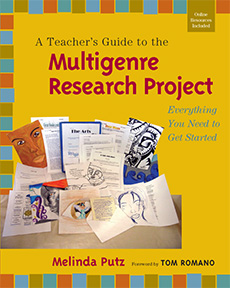
Though often used in the Social Studies or Science classrooms, MGRP lends itself to activating student interest in almost any classroom setting and with almost any subject.
A new approach to an old concept
Most disciplines have standards that involve research of some kind. The MGRP offers an alternative to the traditional research essay or poster-board project. It’s a fresh way to excite students to get them to take ownership of what they want to research, while also hitting those all-important research standards.
The very nature of the MGRP requires students to synthesize their learning through artifacts from multiple genres, i.e., poetry, essay, cartoons, etc., and this synthesis gets students to that all-important Depth of Knowledge Level 4 many schools and districts aspire to.
For any teacher interested in offering an MGRP for student choice, but who is afraid of administrative kickback, there is an entire chapter (10) dedicated solely to the research and standards behind the MGRP.
The MGRP is something to offer for older grades – at least grade 6, with some modifications. By the time students have reached high school, they should already possess the basic skills for researching topics, so implementing the MGRP will be a relatively painless transition. ( See these ideas for middle school from Jeremy Hyler. )
Though not a simple task, implementing the MGRP allows students to follow their own interests, so they are more determined to complete the projects they have chosen. This is not a stuffy essay! Rather, it is a chance for students to truly show their learning and mastery on any topic they choose. In the words of Putz:
Nearly all of the ideas I have included in this book have been created, tried, and revised over a period of about ten years. Although I’ve included lots of handouts and step-by-step instructions, I believe the teaching of this project should be in no way formulaic. The multigenre project should be all about exploration, innovation, and individuality (p. 14).
Resource packed chapters
The book is deceptively thin, but it packs a wallop in information! Each chapter has been well organized to get to the point, and reach it quickly, so that the teacher can get students started as soon as they are ready. The text also includes access to online materials, provided through the Heinemann website, for download and immediate implementation. The samples include handouts, lesson plan ideas, and exemplars for students to see.
Each step of the process is well thought out and well implemented to make the most use of classroom time. Essentially, the book is the layout for the project and each chapter builds upon the one before it.
New to MGRP? Start with Chapter 11
For anyone new to the MGRP idea, Chapter 11 is where you would want to begin. This chapter lays out the proposed schedule, troubleshooting ideas, and even a process for using the MGRP as a group project. After reviewing the information in Chapter 11, return to Chapter 1 for a run-down of what, exactly, an MGRP is, and a chart on how it differs from a traditional research project.
For those teachers who are tired of fighting an uphill battle to get students to complete a research essay or presentation, this is a viable option that offers a chance for students’ buy in while also challenging them to dig deeper and find true meaning in what interests them most.
Erin Corrigan-Smith is a secondary ELA teacher in a suburb of Atlanta. She has a B.A. and M.A. in English, and her focus of study is children’s literature. She has recently returned to school to earn an Ed.D. in Reading and Literacy. In her downtime, she enjoys going to her family’s cabin in the North Georgia mountains with her husband and dog to read, complete her never-ending piles of homework, and relax.
Share this:
Tags: DOK 4 Erin Corrigan-Smith Heinemann Press Melinda Putz MGRP Multigenre Research Project research student engagement
MiddleWeb is all about the middle grades, with great 4-8 resources, book reviews, and guest posts by educators who support the success of young adolescents. And be sure to subscribe to MiddleWeb SmartBrief for the latest middle grades news & commentary from around the USA.
Leave a Reply Cancel reply
Your email address will not be published. Required fields are marked *
Notify me of follow-up comments by email.
Notify me of new posts by email.
This site uses Akismet to reduce spam. Learn how your comment data is processed .
- Popular Posts
- Recent Posts
- Recent Comments

Book Reviews / Mindsets
Mindsets Are Not Just Found in Our Heads

Articles / Multilingual Learners
Supporting MLs: It’s Not Just One More Thing

Articles / Leadership
Teacher Evaluation That Works for Everyone

Book Reviews / Technology
Essential AI Strategies for Every Classroom

Articles / Student Research
A Tool to Help Students Share Their Research

STEM By Design / Student Innovation
Use the Stories of Young Inventors to Inspire Kids

Book Reviews / Gifted students
Serving Gifted Students from Low-Income Homes

Articles / Critical Reading
Help Readers Discover What a Text Is Hiding

New Teacher Tips / Sources for Texts
Tips to Finding Engaging Cross-Curricular Texts

Brain Breaks / Wide Open Learning
Content-related Brain Breaks for Fun Learning

Articles / Back to School
Three Good Things to Start the Year

Articles / Deeper Learning
Boosting Comprehension Across Subject Areas

Future of History / Understanding Religions
Teaching about Judaism, Christianity & Islam
- James Brummitt says: Serving gifted students from low-income homes requires a thoughtful and inclusive...
- Emily says: Thanks! I appreciate the example and all of the resources as...
- Sarah Tantillo says: Happy to help! I have more info on my Website, The...
- Curtis Chandler says: Excellent. Thank you.
- Sarah Tantillo says: I would also recommend Diffit (https://app.diffit.me/#topic), an AI tool which enables...
Sign Up & Receive the Latest News about Our Content…
Email address:
First Name:
Read our Privacy Policy
BOOK REVIEWS

Language and Literacy for Multilingual Learners

How Teachers Can Help Anxious Kids in Class

Changing Harmful Beliefs about Math Education

Start your Educational Consulting Business

100-Word Stories to Support SLIFE Literacy

Engaging All Students with Imaginative Writing

Reflections on Teachers’ Life-Shaping Power

Engage All Students with Offbeat Math Problems

How Reader’s Theater Builds Reading Fluency

Use Emotional IQ Skills to Navigate Turbulence

Reach Past the Timeline with Thematic History

Literacy Instruction Can Promote Social Justice

Centering Love, Justice & Liberation in Schools

Routines for Creating Reading Communities
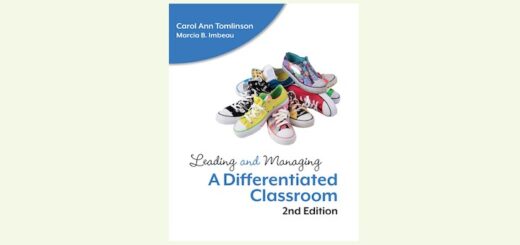
All the Tools You’ll Need for Differentiation
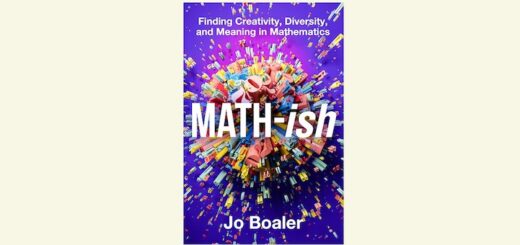
What MATH-ish Can Add to Your Math Classes
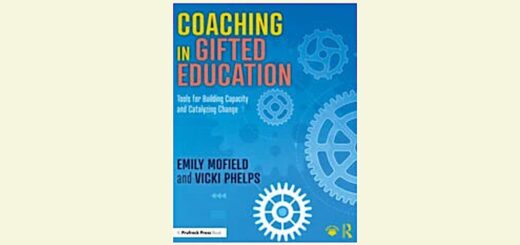
Coaching That Builds GT Teacher Capacity

EDU 436: Teaching Writing Across the Curriculum: Multi Genre Research Project
- Searching for articles
- Writing the Review
- Multi Genre Research Project
You will complete a research project about writing in your content area. This project will differ from a traditional research paper because it will explore your topic using at least 6 different genres (2 pre-determined, 4 self-selected). Your textbook (Daniels, Zemelman, & Steineke) has an excellent explanation and examples of multi-genre projects in chapter 9.
- EDU_436_Rubric
EDU436 Required Components.
Required Components
Your Project must include the following components:
- Table of Contents
Each of artifacts represents key information about the topic in an original or creative way. Three or more artifacts should effectively use technology tools to communicate the information. The message is enhanced by the technology selected. Each artifact will contribute to a well-developed central idea.
Artifact 1 -- Traditional research essay (3-4 pages) addressing the theory and practice of writing in your content area. It should explain why using writing in any content area is an effective way to help students learn the content; this provides the theoretical underpinnings, and 2) How to use writing in the content area to make learning happen; In other words, what strategies and writing tasks could be used. You will need a minimum of 5 different resources. All research must be cited using APA, and a Works Cited page must be included.
Artifacts 2-5 (Self-Selected Genres)
Next you will select 4 different genres through which to present key concepts of your subject area. These will be models of what you might use in your 5 th -12 th grade classroom. The artifacts should be designed to be used as models/samples for assignments for your 6-12 students; focus on various aspects of your chosen theme/topic in your subject area
One Rubric developed to adequately measure student performance on completing one of the self-selected artifacts.
Lastly, you will write a reflective piece (2-3 pages) discussing the process of completing your project and what you learned throughout the process. A detailed description for this project is offered at the end of the syllabus. This long term project will address the Florida State Writing Standards 2, 3, 4, 5, 6, 7, 8, and 9. It will also address the following subject area Competencies and Skills for Middle Grades English: Standards 3, 4, 6, & 7. You will be required to bring to class drafts of each different part of the project throughout the semester, as we engage in the different stages of the writing process, including peer feedback and revision. Please see the assignment description for further directions/details.
Students must upload the Multi-Genre Project into Chalk & Wire by the assignment due date.
Selected Resources
- Writing in Math Class: Grades 2-8
- Responding to Journal writing in Middle Grades Math
- Literacy Instruction in the Content Areas: Getting to the Core of Middle and High School Improvement
- TeenACE for Science: using Scaffolding to support writing
Genre – a genre is a category of writing with its own distinctive style, form, and format. These include but are not limited to the following:
- Bill of Rights
- Constitution or Bylaws
- wanted poster
- short story
- picture book
- recipe book
- newspaper article
- action figure ad
- diary entry
- encyclopedia entry
- campaign speech
- advice column
- advertisement
- birth announcement
- journal entry
- bumper sticker
- greeting card
- shopping list
- script/screenplay
- dictation
Technology Requirement
At least three artifacts must effectively use relevant technology tools to communicate the message. Examples of technology tools that may be used:
- Animoto video
- Webpage(s)
- SlideRocket
- Micro-Blogs (ex.Tumblr)
- Tagxedo/Wordle
- VoiceThread
- Video biography
- Student-created tutorial
- Public Service Announcement
- << Previous: Writing the Review
- Last Updated: Jan 4, 2024 2:35 PM
- URL: https://slulibrary.saintleo.edu/content_area_writing_education

VIDEO
COMMENTS
Learn what multigenre writing is, how it differs from traditional research papers, and why it is a valuable pedagogical tool. Find sample assignments, criteria, and links to additional materials for planning and assessing multigenre projects.
Learn how to teach writing and reading with a multigenre research project, a mixture of imagination, research, and multiple genres of writing. Discover the benefits of this approach, such as student interest, creativity, differentiation, and writing process.
accomplish essential steps in the process of multigenre research. She helps stu-dents comprehend the scope and depth of multigenre papers, conduct thorough and responsible research, write both traditional and nontraditional genres, evaluate their multigenre projects, and prepare to orally interpret them. Melinda
Learn how to create a multigenre project that presents multiple perspectives on a topic or event, using different genres and sources. See the requirements, guidelines, and examples for this writing assignment.
Learn how to implement the Multigenre Research Project (MGRP), a fresh and engaging way to activate student interest and encourage them to take ownership of their own learning. This book by Melinda Putz offers step-by-step instructions, handouts, and online resources for teachers of any subject and grade level.
In the multi-genre research project, students use the information gathered from their research and the books they read to create snippets oftheir authors' lives. Romano's multi-genre paper makes students craft their research in their own words, through multiple viewpoints and different genres.
Topics include how to use the library, con- duct research, write in multiple genres, and make strong oral presen- tations. Outside of the weekly time we spend together, all of the students are responsible for continuing on their own with their multigenre re- search.
The book is grounded in state-of-the-art research on the writing process and the role of writing in content-area learning. Teacher-friendly features include vivid classroom examples, differentiation tips, links to online resources, and reproducible worksheets and forms.
The multigenre research project is growing in popularity with both students and teachers. That's because it's such a powerful way to engage students in reading, writing, and critical analysis...
Learn what multigenre writing is, how it differs from traditional research papers, and why it is a creative and effective way to communicate ideas. Explore various genres, topics, and requirements for multigenre projects with examples and tips.